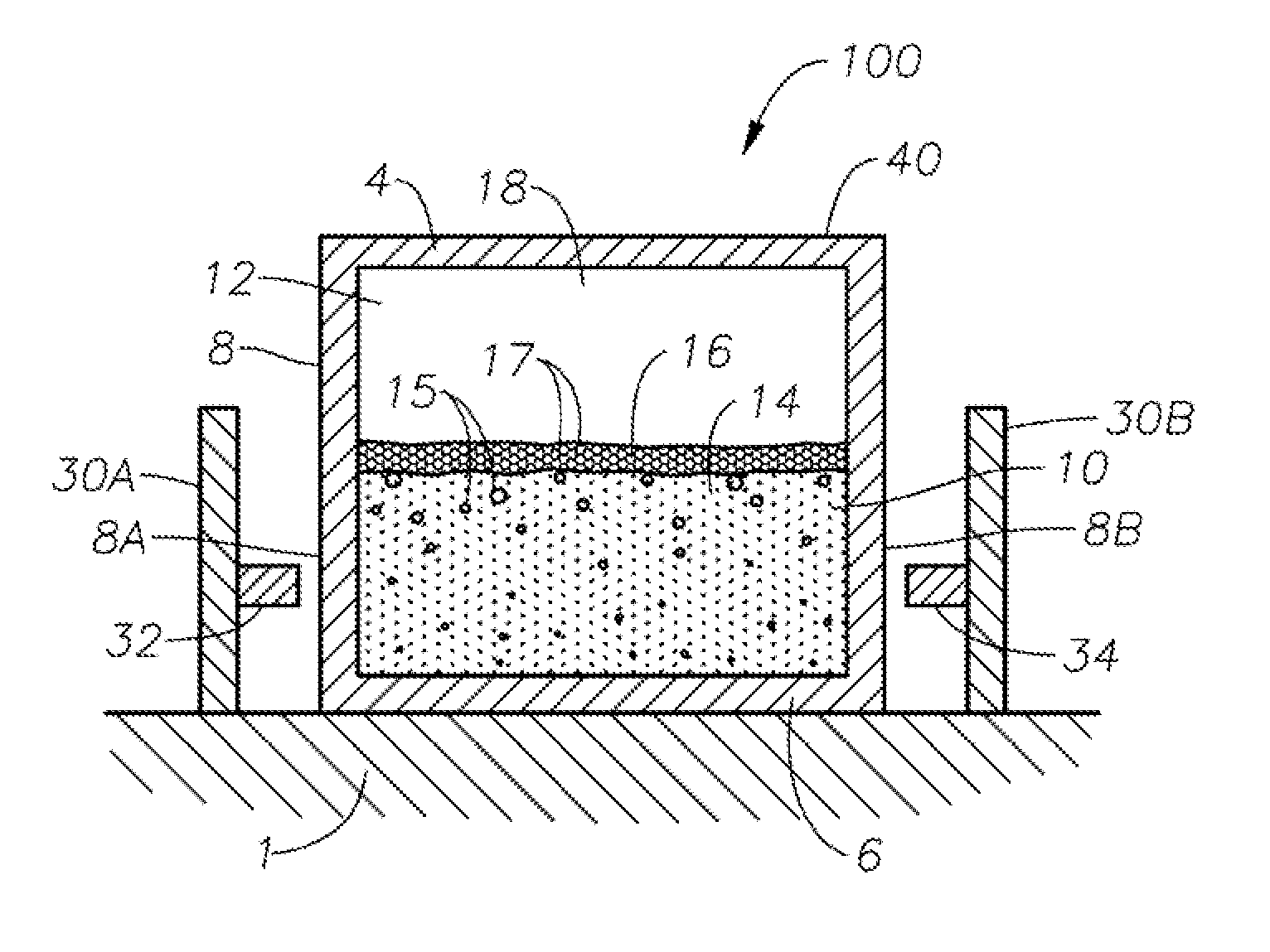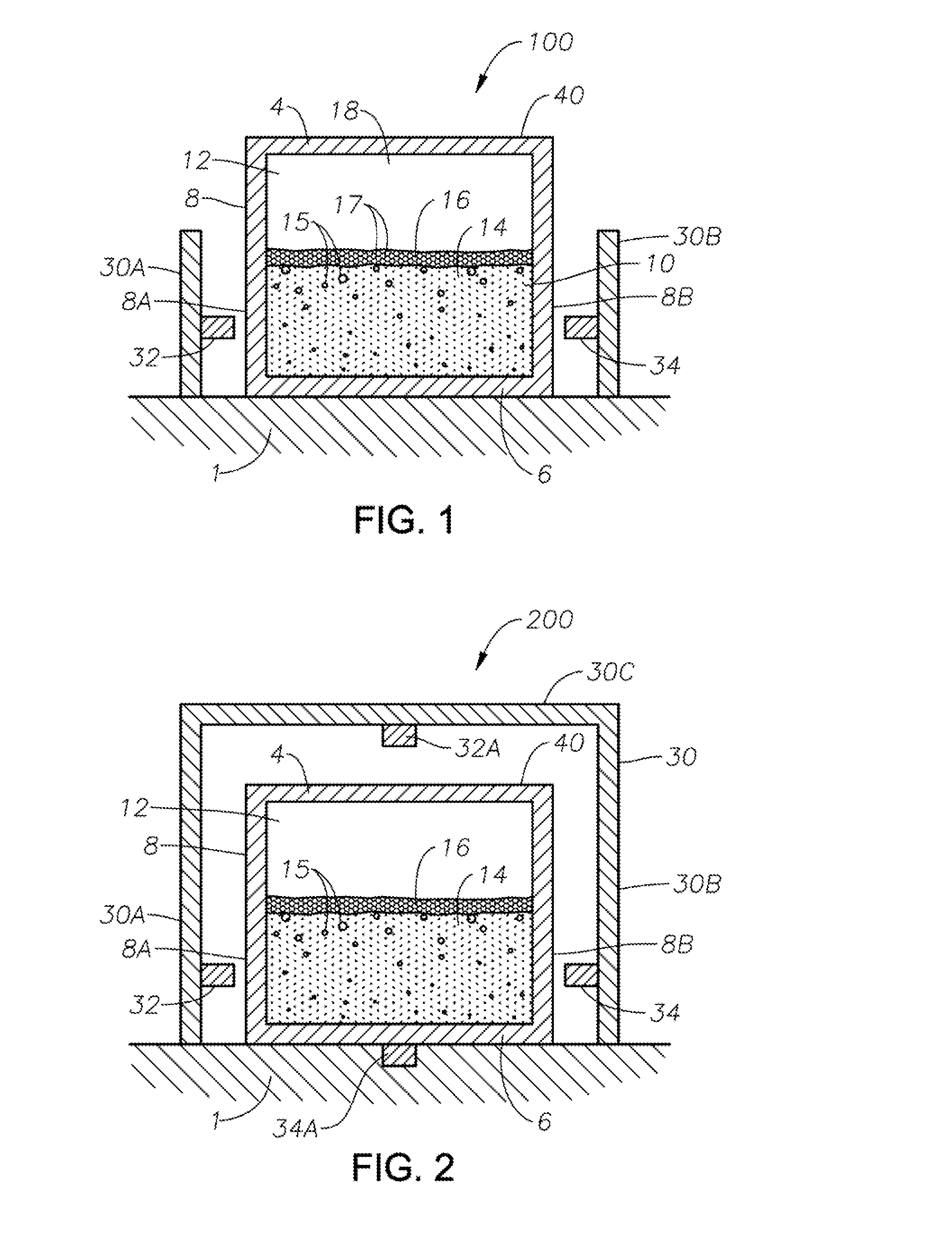Methods and systems for monitoring glass and/or foam density as a function of vertical position within a vessel
a technology of vertical position and glass, which is applied in the field of submerged combustion furnaces, can solve the problems of high turbulence, rapid melting of glass batches, and difficult to ascertain the local and bulk distribution (size and/or location) of bubbles within molten glass
- Summary
- Abstract
- Description
- Claims
- Application Information
AI Technical Summary
Benefits of technology
Problems solved by technology
Method used
Image
Examples
embodiment 100
[0062]Referring again to FIG. 1, a frame comprising frame portions 30A, 30B extend generally vertically from a plant floor 1 or other support structure up to points along portion 8A, 8B of external surface of sidewall structure 8. Frame portion 30A supports at least one EM source 32 of an EM sensor, while frame portion 30B supports at least one EM detector 30B of the EM detector. The height of frame portions 30A, 30B may be less than, equal to, or greater than the height of roof 4, while the horizontal length of frame portions 30A, 30B depends on the features of each embodiment, as will become apparent reading further herein. For example, if there is only one stationary EM source 32 and one stationary EM detector 34, as in embodiment 100, then frame portions 30A, 30B may simply be posts. Appropriate radiation shielding will also be required, but for the purposes of this disclosure, it is assumed the amount and position of shielding will be dictated by government laws, regulations, a...
embodiment 800
[0070]FIG. 8 illustrates schematically an embodiment 800 comprising an SCM 2, the SCM including in this embodiment an SCM roof 42, SCM floor 44, and SCM sidewall structure 46 connecting roof 42 and floor 44, with roof 42 including an opening for a stack 48. SCM 2 produces a turbulent molten foamed glass 51 from one or more vitrifiable feed materials, for example glass batch fed from a feeder 50 through an inlet port 52. SCM 2 includes one or more SC burners 53, 55, and 57, protruding through respective apertures 70, 71, and 72 in SC floor 44, and in certain embodiments one or more SC burners 53, 55, and 57 may be oxy / fuel burners combusting fuel “F” with an oxygen-enriched oxidant “O”. Turbulence created by SC burners 53, 55, and 57 in molten foamed glass 51 is indicated schematically by curved flow lines, single-headed arrows, and rolling surface “S”. While the exits of SC burners may be flush with SC floor 44, SC burner 55 is illustrated as protruding slightly into SCM 2. SC burne...
PUM
| Property | Measurement | Unit |
|---|---|---|
| Angle | aaaaa | aaaaa |
| Angle | aaaaa | aaaaa |
| Temperature | aaaaa | aaaaa |
Abstract
Description
Claims
Application Information
 Login to view more
Login to view more - R&D Engineer
- R&D Manager
- IP Professional
- Industry Leading Data Capabilities
- Powerful AI technology
- Patent DNA Extraction
Browse by: Latest US Patents, China's latest patents, Technical Efficacy Thesaurus, Application Domain, Technology Topic.
© 2024 PatSnap. All rights reserved.Legal|Privacy policy|Modern Slavery Act Transparency Statement|Sitemap



